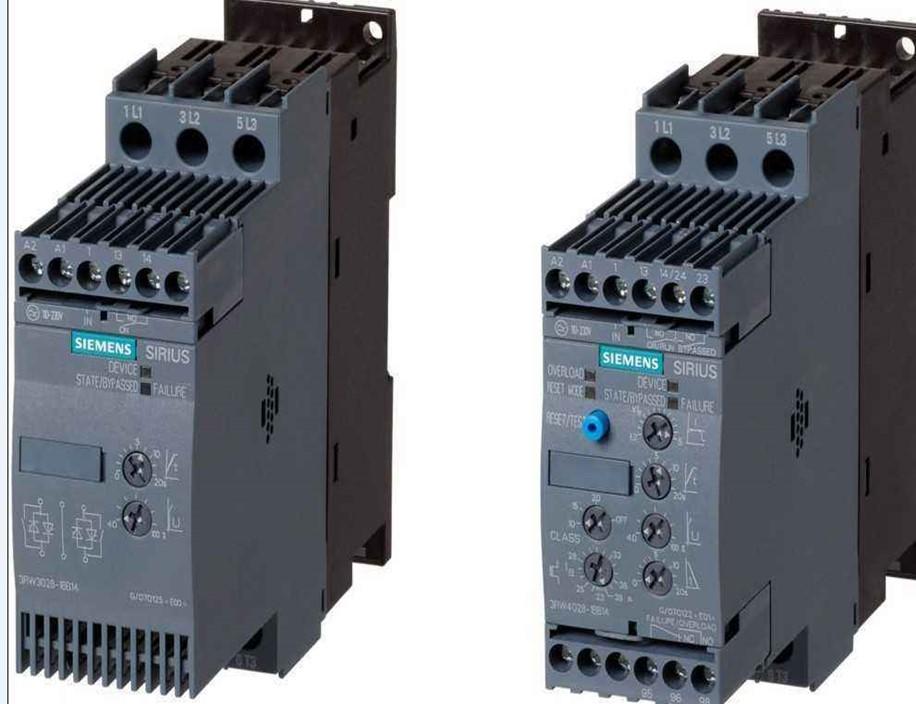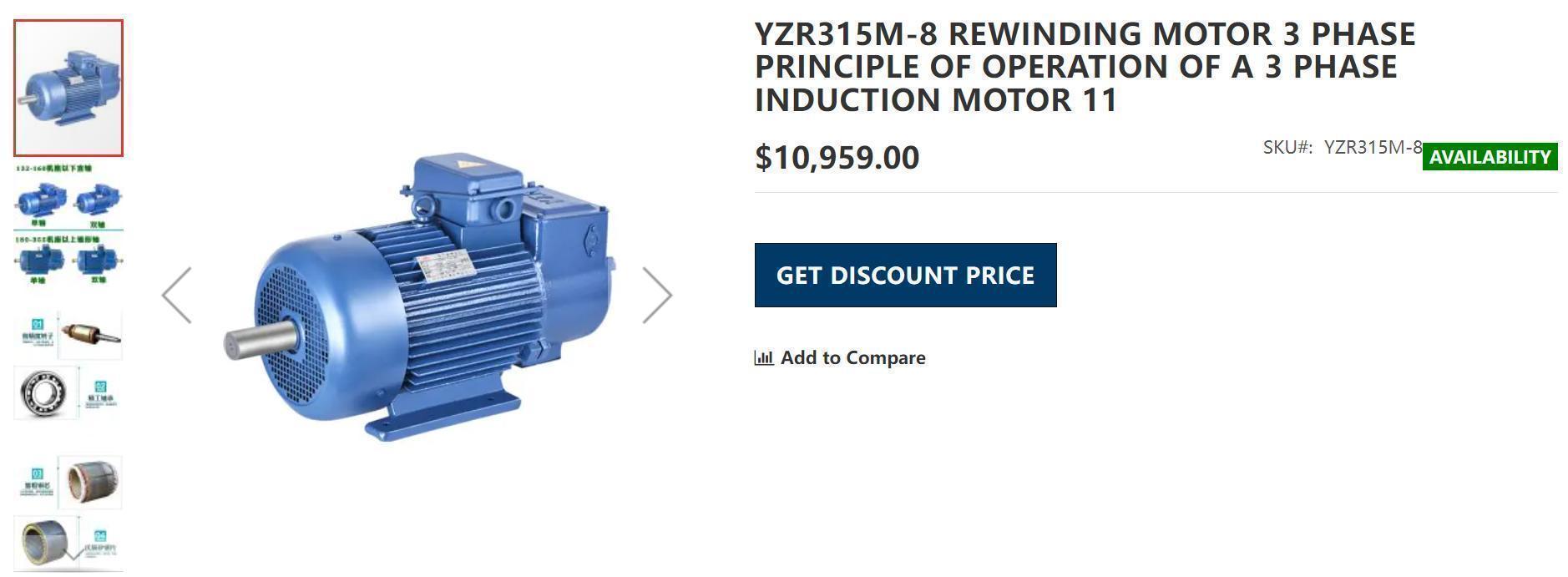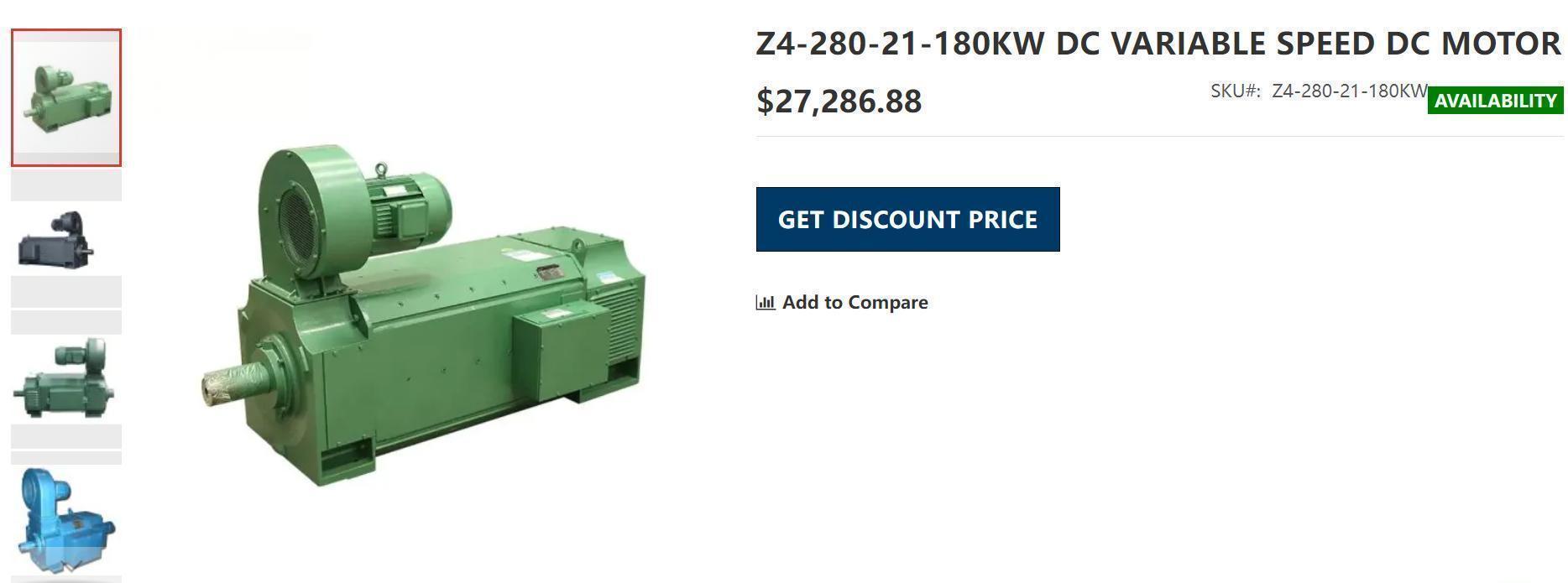The following is the product model and its introduction:
3RA1911-1A, 3RA1911-1AA00, 3RK1901-0NA00, 3RK1901-0PA00, 3RW4024-1BB04, 3RW4024-1BB05, 3RW4024-1BB14, 3RW4024-1BB15, 3RW4024-1TB04, 3RW4024-1TB05, 3RW4024-2BB04, 3RW4024-2BB05, 3RW4024-2BB14, 3RW4024-2BB15, 3RW4422-1BC34, 3RW4422-1BC35, 3RW4422-1BC36, 3RW4422-1BC44, 3RW4422-1BC45, 3RW4422-1BC46, 3RW4422-3BC34, 3RW4422-3BC35, 3RW4422-3BC36, 3RW4422-3BC44, 3RW4422-3BC45, 3RW4422-3BC46, 3RW4423-1BC34, 3RW4423-1BC35, 3RW4423-1BC36, 3RW4423-1BC44, 3RW4423-1BC45, 3RW4423-1BC46, 3RW4423-3BC34, 3RW4423-3BC35, 3RW4423-3BC36, 3RW4423-3BC44, 3RW4423-3BC45, 3RW4423-3BC46, 3RW4424-1BC34, 3RW4424-1BC35, 3RW4424-1BC45, 3RW4424-1BC46, 3RW4424-3BC34, 3RW4424-3BC35, 3RW4424-3BC36, 3RW4424-3BC44, 3RW4424-3BC45, 3RW4424-3BC46, 3RW4425-1BC34, 3RW4425-1BC35, 3RW4425-1BC36, 3RW4425-1BC44 , 3RW4425-1BC45, 3RW4425-1BC46, 3RW4425-3BC34, 3RW4425-3BC35, 425-3BC36, 3RW4425-3BC44, 3RW4425-3BC45, 4425-3BC46, 3RW4426-1BC34, 3RW4426-1BC35, 3RW3013-1BB14, 3RW3014-1BB14, 3RW3016-1BB14, 3RW3017-1BB14, 3RW3018-1BB14, 3RW3026-1BB14, 3RW3027-1BB14, 3RW3028-1BB14, 3RW3036-1BB14, 3RW3037-1BB14, 3RW3038-1BB14, 3RW3046-1BB14, 3RW3047-1BB14, 3RW4026-1BB14, 3RW4046-1BB14, 3RW4027-1BB14, 3RW4028-1BB14, 3RW4036-1BB14, 3RW4037-1BB14, 3RW4038-1BB14, 3RW4047-1BB14, 3RW4055-6BB44, 3RW4056-6BB44, 3RW4073-6BB44, 3RW4074-6BB44, 3RW4075-6BB44, 3RW4076-6BB44, 3RW4422-1BC44, 3RW4423-1BC44, 3RW4424-1BC44, 3RW4425-1BC44, 3RW4426-1BC44, 3RW4427-1BC44, 3RW4434-6BC44, 3RW4435-6BC44, 3RW4436-6BC44, 3RW4443-6BC44, 3RW4444-6BC44, 3RW4445-6BC44, 3RW4446-6BC44, 3RW4447-6BC44, 3RW4453-6BC44, 3RW4454-6BC44, 3RW4455-6BC44, 3RW4456-6BC44
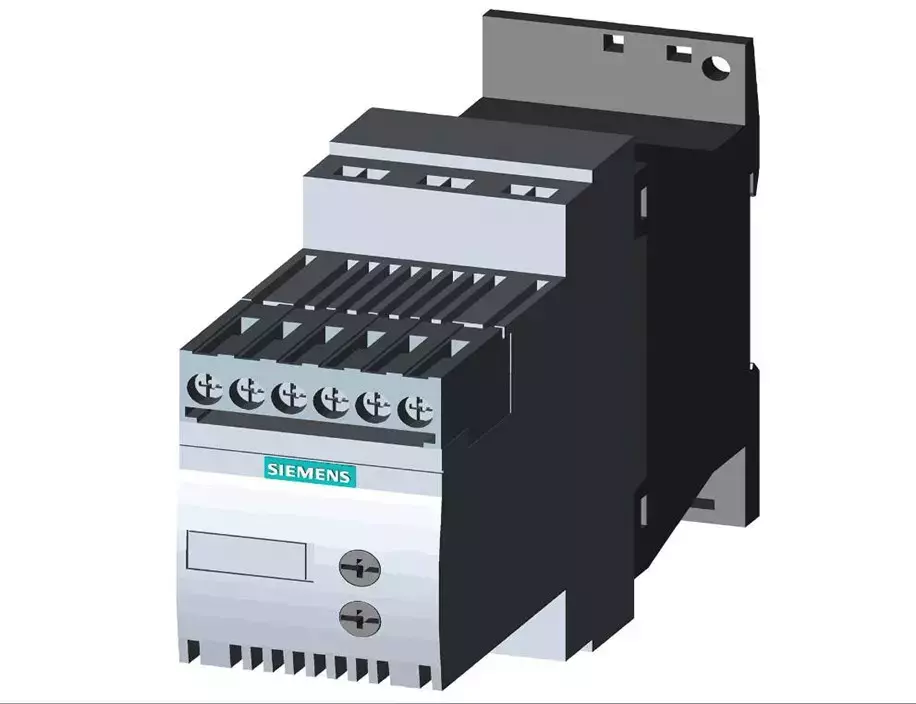
Constraints
The 3RW soft starters should always be designed on the basis of the required rated operational current of the motor. The motor ratings listed in the selection and ordering data are rough guide values and designed for basic starting conditions (CLASS 10). For other starting conditions we recommend the Simulation Tool for Soft Starters (STS).
Motor rating data in kW and hp is based on IEC 60947‑4‑1.
At an installation altitude above 2 000 m, max. permissible operational voltage is reduced to 480 V.
Simulation Tool for Soft Starters (STS)
The Simulation Tool for Soft Starters (STS) provides a convenient means of designing soft starters using a simple, quick and easy-to-use interface. Entering the motor and load data will simulate the application and prompt suggestions for suitable soft starters.
Link to a free download of the Simulation Tool for Soft Starters (STS)
Simple, quick and user-friendly operator interface
Detailed and up-to-date Siemens motor database, including IE3/IE4 motors.
Simulation of heavy starting up to CLASS 30
Update-capable (e.g. motors, load types, functions)
Fast simulations with minimum input data
Immediate, graphical curve charts of start operations with limit values
View in table form of suitable soft starters for the application
Everything at a glance: Simulation and results list
Circuit concept
Three-phase controlled SIRIUS 3RW soft starters can be operated in two different types of circuit:
Inline circuit
The controls for isolating and protecting the motor are simply connected in series with the soft starter. The motor is connected to the soft starter with three leads.
Inside-delta circuit
The wiring is similar to that of wye-delta starters. The phases of the soft starter are connected in series with the individual motor windings. The soft starter then only has to carry the phase current, amounting to about 58% of the rated motor current (conductor current).
Which circuit?
Using the inline circuit involves the lowest wiring outlay. If the soft starter to motor connections are long, this circuit is preferable.
The wiring complexity is twice as high when using the inside-delta circuit, but a smaller device can be used with the same rating. Thanks to the choice of operating mode between the inline circuit and inside-delta circuit, it is always possible to select the most favorable solution.
The braking function is only possible in the inline circuit. The inside-delta circuit cannot be used in 690 V line supplies.
Configuration
The solid-state 3RW soft starters are designed for normal starting. In case of heavy starting or increased starting frequency, a larger unit may need to be selected. The 3RW52 soft starters may be used in isolated supply networks (IT systems) up to 600 V AC and the 3RW55 soft starter even up to 690 V.
For long starting times, we recommend a PTC sensor or temperature switch in the motor. This also applies for the "torque control", "pump stop" and "DC braking" stopping modes, because during the stopping time in these modes, an additional current loading applies in contrast to coasting down.
No capacitive elements are permitted in the motor feeder between the SIRIUS 3RW soft starter and the motor (e.g. no reactive-power compensation equipment). In addition, neither static systems for reactive-power compensation nor dynamic PFC (Power Factor Correction) must be operated in parallel during starting and stopping of the soft starter. This is important to prevent faults arising on the compensation equipment and/or the soft starter.
All elements of the main circuit (such as fuses and controls) should be dimensioned for direct-on-line starting, following the load short-circuit conditions. Fuses and switching devices must be ordered separately. The harmonic component load for starting currents must be taken into consideration for the selection of motor starter protectors (selection of release). Please observe the maximum switching frequencies specified in the technical specifications.
Notes:
When three-phase motors are switched on, voltage drops occur as a rule on starters of all types (direct-on-line starters, wye-delta starters, soft starters). The infeed transformer must always be dimensioned such that the voltage dip when starting the motor remains within the permissible tolerance. If the infeed transformer is dimensioned with only a small margin, it is best for the control voltage to be supplied from a separate circuit (independently of the main voltage) in order to avoid the potential switching off of the soft starter.
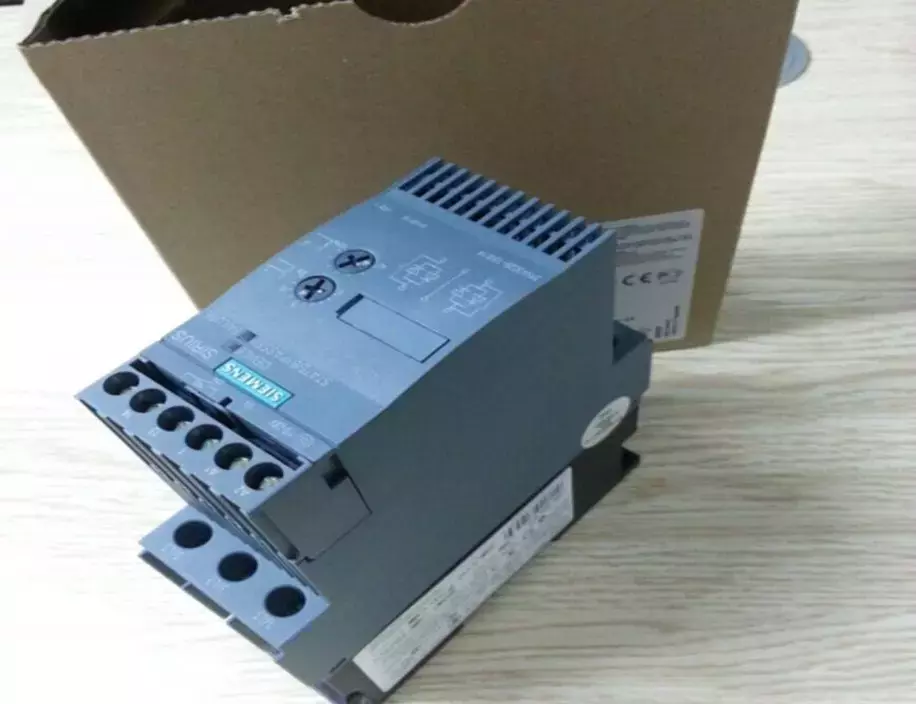
Motor feeders with soft starters
The type of coordination according to which the motor feeder with soft starter is mounted depends on the application-specific requirements. Normally, fuseless mounting (combination of motor starter protector and soft starter) is sufficient. If type of coordination "2" is to be fulfilled, then semiconductor fuses must be fitted in the motor feeder.
Type of coordination "1" according to IEC 60947-4-1:
After a short-circuit incident, the unit is defective and therefore unsuitable for further use (protection of persons and system guaranteed).
Type of coordination "2" in according to IEC 60947-4-1: After a short-circuit incident the unit is suitable for further use (protection of persons and system guaranteed).
The type of coordination refers to soft starters in combination with the stipulated protective device (motor starter protector/fuse), not to any additional components in the feeder.
The types of coordination are indicated in the corresponding tables by the symbols shown on orange backgrounds.
Feeder tests and events
To keep the scope of feeder tests with SIRIUS 3RW soft starters within economically reasonable limits, tests were conducted with feeder components (motor starter protectors/circuit breakers, fuses) that cover the greatest number of use cases (different soft starter versions depending on, for example, line voltage, type of circuit, or necessary overdimensioning). For the combined tests that were conducted, the values for the short-circuit breaking capacity Iq in kA were determined and documented.
If the short-circuit breaking capacity is the same, of course, smaller circuit breakers or fuses can also be used for the selected soft starter, provided the dimensioning of the short-circuit components is suitable for the connected three-phase motor and the line protection for the cables used. For type of coordination "2" (with semiconductor protection), it is also necessary to compare the characteristics because the protection function would no longer be completely ensured if too small a fuse were selected. If the soft starter does not have a motor protection function, the motor protection must also be dimensioned appropriately.
Setting the motor current
If circuit breakers with an overload release are used (e.g. SIRIUS 3RV20 motor starter protector), we recommend activating the motor protection function of the SIRIUS 3RW soft starter to protect the motor and setting the soft starter to the rated operational current Ie of the motor. We recommend setting the circuit breaker in such a way that it provides line protection but does not usually trip before the soft starter when a motor overload occurs.
Line protection and motor protection
Line protection and motor protection are not ensured in all operating cases, depending on:
How the motor feeder is constructed (e.g. with fuses or motor starter protectors)
Whether the SIRIUS 3RW soft starters are operated within the specification relevant for the tests (IEC 60947‑4‑2)
Or whether the documented constraints (see text at the start of this topic) have been observed
There are operating states of the thyristors (caused, for example, by high starting frequencies or heavy starting) that do not permit an overload to be disconnected by the SIRIUS 3RW soft starter. These cases are very rare but cannot be ruled out in all cases.
In accordance with IEC 60947‑4‑2, SIRIUS 3RW soft starters are dimensioned and checked for operation with up to 8 times the rated operational current Ie. For currents larger than this, reliable disconnection of an overcurrent by the SIRIUS 3RW soft starter is not ensured. Such large overcurrents have to be disconnected by a switching device at a higher level (e.g. by a circuit breaker or a fuse in conjunction with an optional line contactor).
Motor protection by the SIRIUS 3RW soft starter is ensured for currents up to 8 times the rated operational current Ie in any case. Line protection is covered by the line-side circuit breaker or fuse. These motor feeder components must be dimensioned accordingly and the cable cross-sections must be chosen to match.
Line protection
Line protection in motor feeders with soft starters is always covered by a fuse or a circuit breaker both in case of an overload and in case of a short-circuit. The circuit breaker must have an overload release. That is the case for motor starter protectors (e.g. SIRIUS 3RV20).
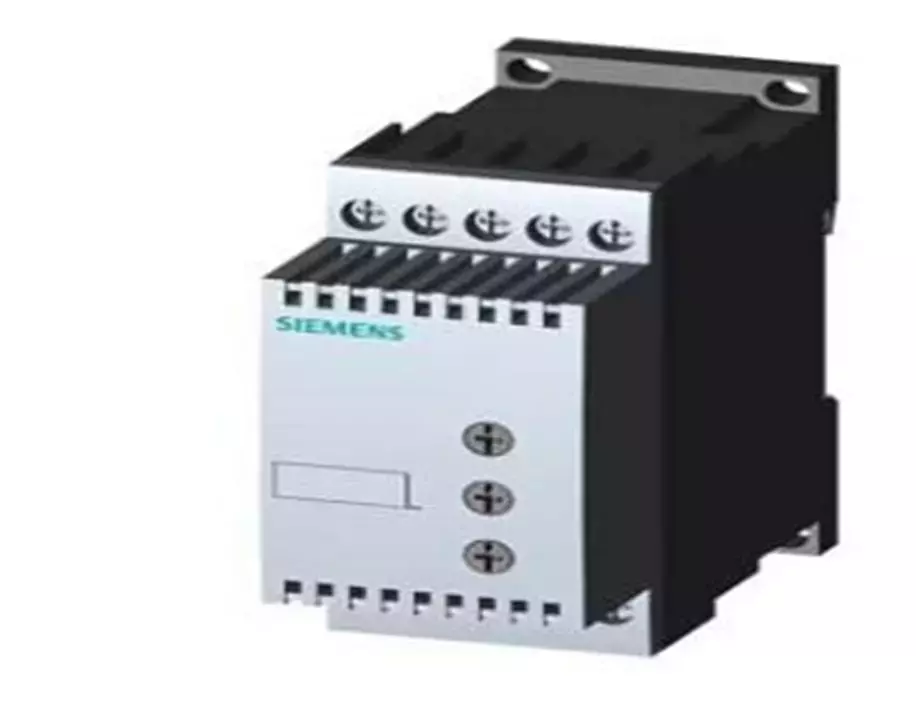
Circuit breakers without an overload release (e.g. SIRIUS 3RV23 motor starter protectors) must not be used because they do not provide overload protection. The feeder tests for these were therefore not performed. If the motor feeder with SIRIUS 3RW soft starters is configured without a fuse, motor starter protectors must be used that ensure tripping on an overload.
Motor protection
If fuses are used to provide protection against overload and short-circuit of the cables, the motor is protected by the SIRIUS 3RW soft starter. If the constraints (simple starting conditions CLASS 10, listed maximum values for starting current, starting time and number of starts per hour) are observed, the motor feeders can be configured according to IEC as described in the section about soft starters (an optional line contactor is not required). If these preconditions are met, the SIRIUS 3RW soft starters are able to trip on overload to protect the motor in any case.
In other starting conditions and on heavy starting, the following must be considered:
Trip classes
Tested fuseless switchgear assemblies comprising SIRIUS 3RW soft starters and motor starter protectors only comply with CLASS 10.
To configure tested motor feeders, for example, for CLASS 20 or CLASS 30, fuses must be used together with SIRIUS 3RW soft starters.
Line contactor
In applications with high starting frequencies or heavy starting as of CLASS 20, we recommend combining fuses with the use of a line contactor on the line side so that a motor overload is disconnected by the fault signaling contact of the soft starter in any case (that is, even in rare cases in which disconnection by the SIRIUS 3RW soft starter is no longer possible due to the operating state of the thyristors).
Soft starter is a kind of motor control equipment integrating soft start, soft stop, light load energy saving and multi-function protection. It can realize the smooth start of the motor without shock during the whole start process, and can adjust various parameters in the start process according to the characteristics of the motor load, such as current limit value, start time, etc.
Trip class (electronic overload protection)
The motor and cables must be dimensioned for the selected trip class.
The rated data of the soft starters refers to normal starting (CLASS 10). For heavy starting (> CLASS1 0), the soft starter may need to be overdimensioned, as a rated motor current that is lower than the soft starter rated current must be set.
Short-circuit protection
The SIRIUS 3RW soft starter does not have short-circuit protection. It is essential to provide short-circuit protection.
Line protection
Avoid impermissibly high cable surface temperatures by correctly dimensioning the cross-sections.
A sufficiently large cable cross-section must be selected.
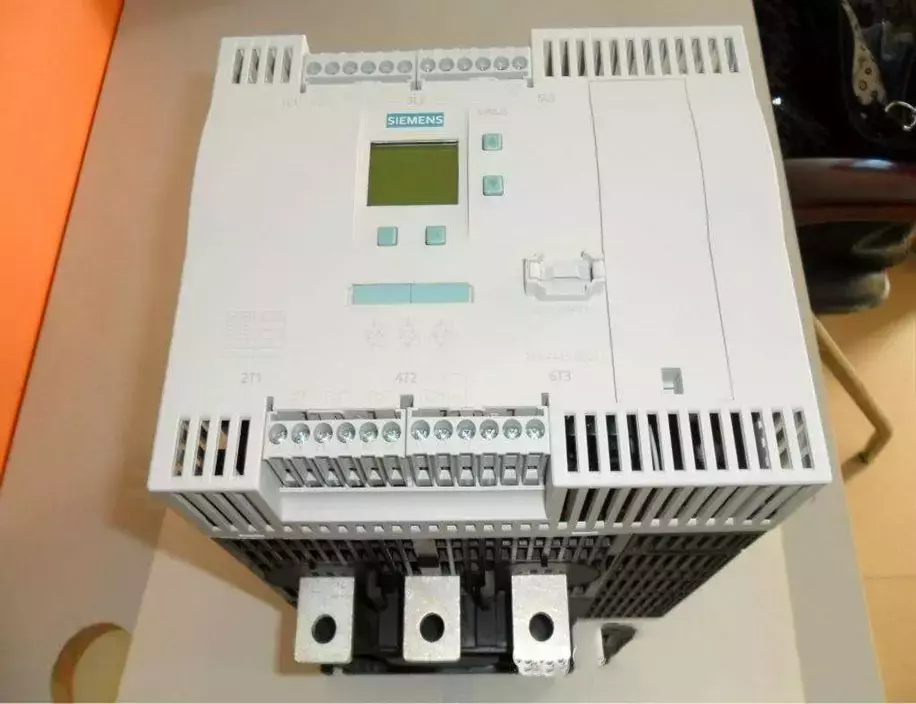
Working principle:
Soft starter (soft starter) is a novel motor control device that integrates motor soft start, soft stop, light load energy saving and multiple protection functions. It is called Soft Starter abroad. The soft starter uses three opposite parallel thyristors as the voltage regulator, which is connected between the power supply and the motor stator. Such a circuit is a three-phase fully controlled bridge rectifier circuit. When a soft starter is used to start the motor, the output voltage of the thyristor gradually increases and the motor gradually accelerates until the thyristor is fully turned on. The motor works on the mechanical characteristics of the rated voltage to achieve smooth start, reduce the starting current, and avoid starting overcurrent trip. When the motor reaches the rated speed, the starting process ends, the soft starter automatically replaces the completed thyristor with a bypass contactor to provide the rated voltage for the normal operation of the motor, to reduce the thermal loss of the thyristor and extend the service life of the soft starter , To improve its work efficiency, and to avoid harmonic pollution in the power grid. The soft starter also provides a soft stop function. In contrast to the soft start process, the soft stop gradually reduces the voltage and the number of revolutions gradually drops to zero to avoid the torque shock caused by free stop.
Control principle:
The soft starter controls the output voltage by controlling the conduction angle of the thyristor. Therefore, the soft starter is essentially a step-down starter that can be automatically controlled. Since it can adjust the output voltage arbitrarily for current closed-loop control, it is more efficient than traditional step-down starting methods (such as series resistance start-up and auto-transformer start-up). Etc.) have more advantages. For example, starting a full load to start a variable torque load such as a fan or water pump, achieving a soft stop of the motor, and applying it to a water pump can completely eliminate the water hammer effect.
The main function
1. Overload protection function: The soft starter introduces a current control loop, so it can track and detect the change of motor current at any time. By increasing the setting of overload current and the inverse time limit control mode, the overload protection function is realized. When the motor is overloaded, the thyristor is turned off and an alarm signal is issued.
2. Phase loss protection function: When working, the soft starter can detect the change of the three-phase line current at any time. Once the current is cut off, the phase loss protection response can be made.
3. Overheat protection function: The temperature of the thyristor radiator is detected by the internal thermal relay of the soft starter. Once the temperature of the radiator exceeds the allowable value, the thyristor is automatically turned off and an alarm signal is issued.
4. Measurement loop parameter function: When the motor is working, the detector in the soft starter has been monitoring the running state of the motor, and the monitored parameters are sent to the CPU for processing. The CPU analyzes, stores, and displays the monitored parameters. Therefore, the motor soft starter also has the function of measuring loop parameters.
5. Other functions: Through the combination of electronic circuits, other various interlocking protections can also be realized in the system.
Main features:
1. The motor soft starter is used as the control output actuator in the structure, and the control logic is implemented with a PLC programmable controller, which makes the system structure simple and clear. The use of digital monitoring and digital settings improves the reliability of the control system and facilitates maintain. At the same time, it has an external control function, which can be connected according to the usage, which is convenient for control.
2. The motor soft starter provides a smooth and gradual starting process for the motor, reducing the impact of the starting current on the power grid or power generation equipment, controlling the starting current within a safe range, and improving the original control system due to the large starting current impacting the factory power supply. Conditions that affect the normal operation of other equipment.
3. The start-up process adopts bidirectional thyristor. After the start-up process is completed, the contactor short-circuits the control mode of the thyristor, which avoids the direct control of the motor by the contactor to make the contacts easy to arc, stick, burn out and other failure Copyrighted by ENGINEERING China, it also saves energy.
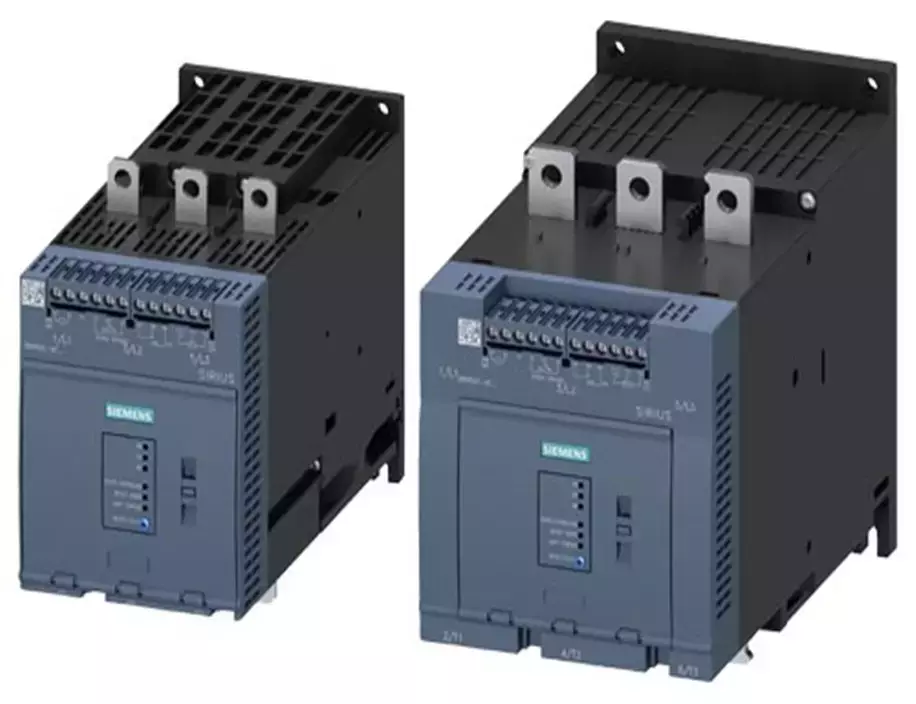
4. Soft start and soft stop modes can reduce equipment vibration and noise, reduce mechanical stress, and extend the service life of power generation equipment and mechanical transmission system.
5. It has multiple protection functions such as over-current, overload and power shortage. At the same time, it can detect various bad operating conditions of the system involved in the load (such as air compressor), which is conducive to the safe operation of the protection equipment.
6. The display function on the control panel makes it easy to fully understand the operation of the equipment on site.
7. Digital parameter setting and display functions are intuitive, convenient and time-saving.
Performance characteristics:
Soft start adopts software control mode to start the motor smoothly. The control mode is soft (piece) control of strength (electricity). The control result smoothes the motor starting characteristic from "hard" to "soft", so it is called "soft start".
